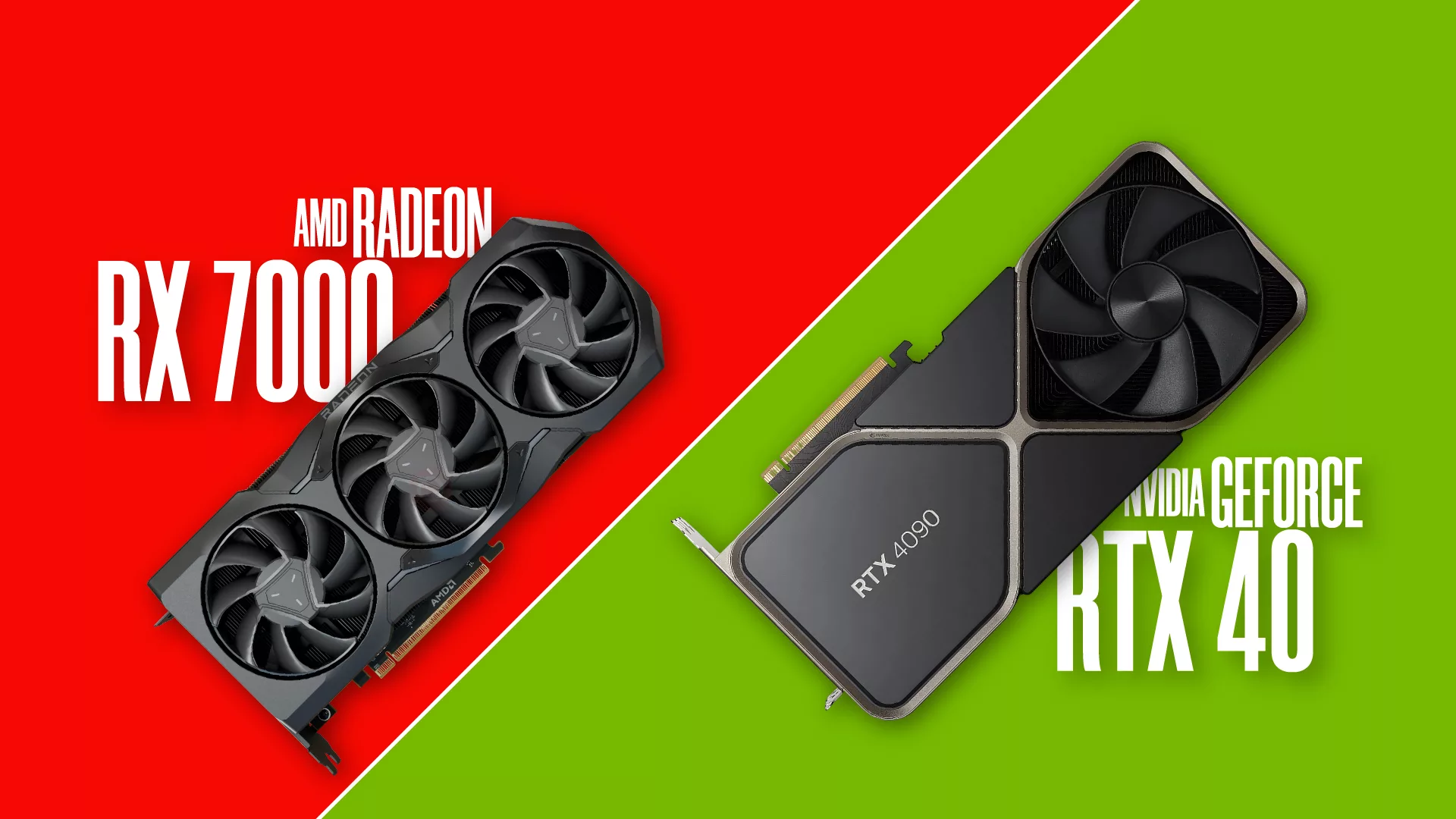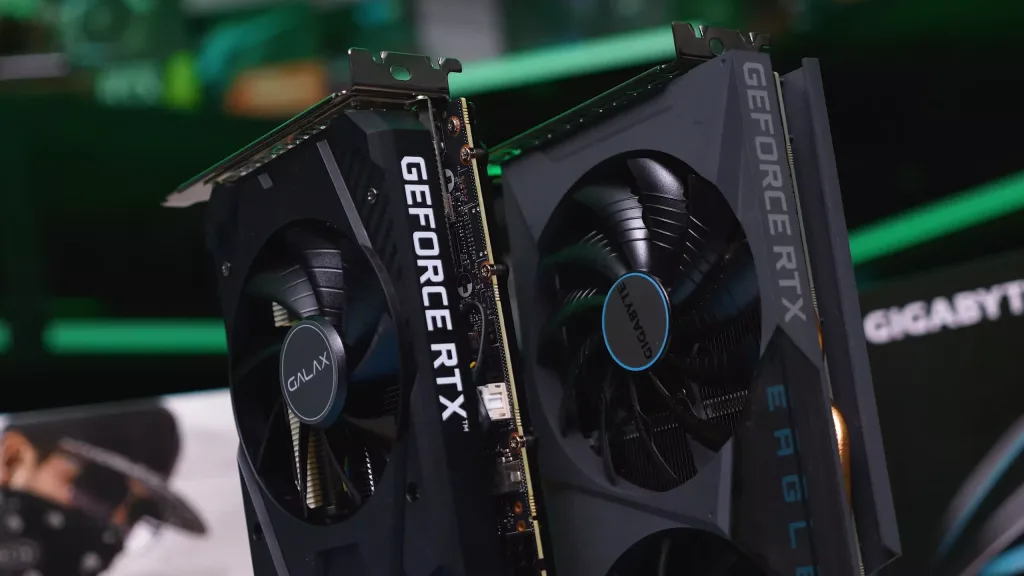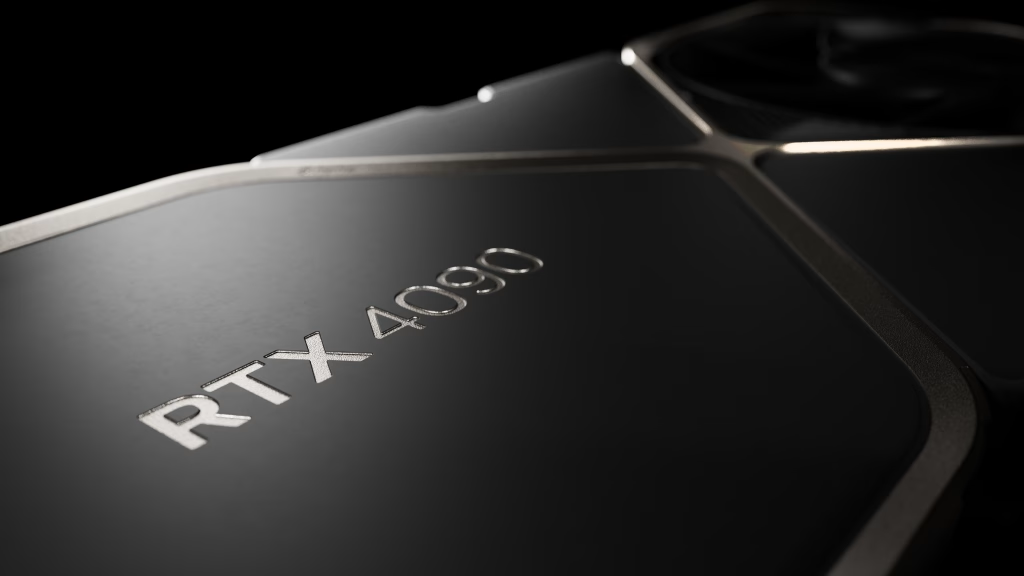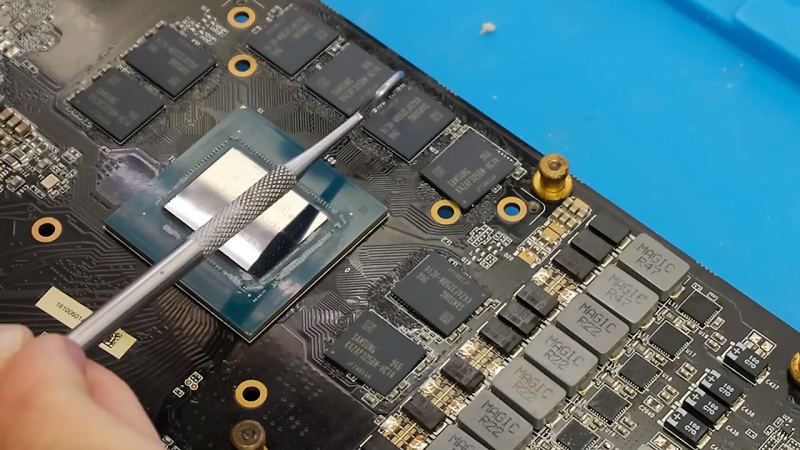AMD’s Radeon RX 7000 series was released on December 13, 2022, with the 7900 XT and 7900 XTX. Nvidia’s GeForce 40 series was released on October 12, 2022, with the RTX 4090, shortly followed by the RTX 4080. Since then, both companies have released a few more GPUs respectively, for all ranges such as the entry-level RTX 4060 and the mid-range RX 7700 XT.
Jump to:
In this article, we’re going to compare the performance of cards from both product lines. As these are the latest GPU lineups, a comparison can help you understand which team to go with, Green or Red.
First of all, here’s a breakdown of all the products and their specs.
Nvidia GeForce RTX 40 Series
| Model | MSRP | Core Clock | VRAM | TFLOPS | TDP |
|---|---|---|---|---|---|
| RTX 4060 | $299 | 1830 MHz (2460) | 8GB | 15 | 115W |
| RTX 4060 Ti | $499 | 2310 MHz (2540) | 16GB | 22.06 | 160W |
| RTX 4070 | $599 | 1920 MHz (2475) | 12GB | 22.61 | 200W |
| RTX 4070 Ti | $799 | 2310 MHz (2610) | 12GB | 35.48 | 285W |
| RTX 4080 12GB (Unlaunched) | $899 | 2310 MHz (2610) | 12GB | 35.48 | 285W |
| RTX 4080 | $1199 | 2210 MHz (2505) | 16GB | 42.99 | 320W |
| RTX 4090 | $1599 | 2230 MHz (2520) | 24GB | 73.07 | 450W |
AMD Radeon RX 7000 Series
| Model | MSRP | Core Clock | VRAM | TFLOPS | TDP |
|---|---|---|---|---|---|
| Radeon RX 7600 | $269 | 1720 MHz (2655) | 8GB | 14.09 | 165W |
| Radeon RX 7700 XT | $449 | 1900 MHz (2544) | 12GB | 26.27 | 245W |
| Radeon RX 7800 XT | $499 | 1800 MHz (2430) | 16GB | 27.64 | 263W |
| Radeon RX 7900 GRE | $649 | 1270 MHz (2245) | 16GB | 26.01 | 260W |
| Radeon RX 7900 XT | $899 | 1500 MHz (2400) | 20GB | 32.26 | 315W |
| Radeon RX 7900 XTX | $999 | 1900 MHz (2500) | 24GB | 46.69 | 355W |
Pricing & Models
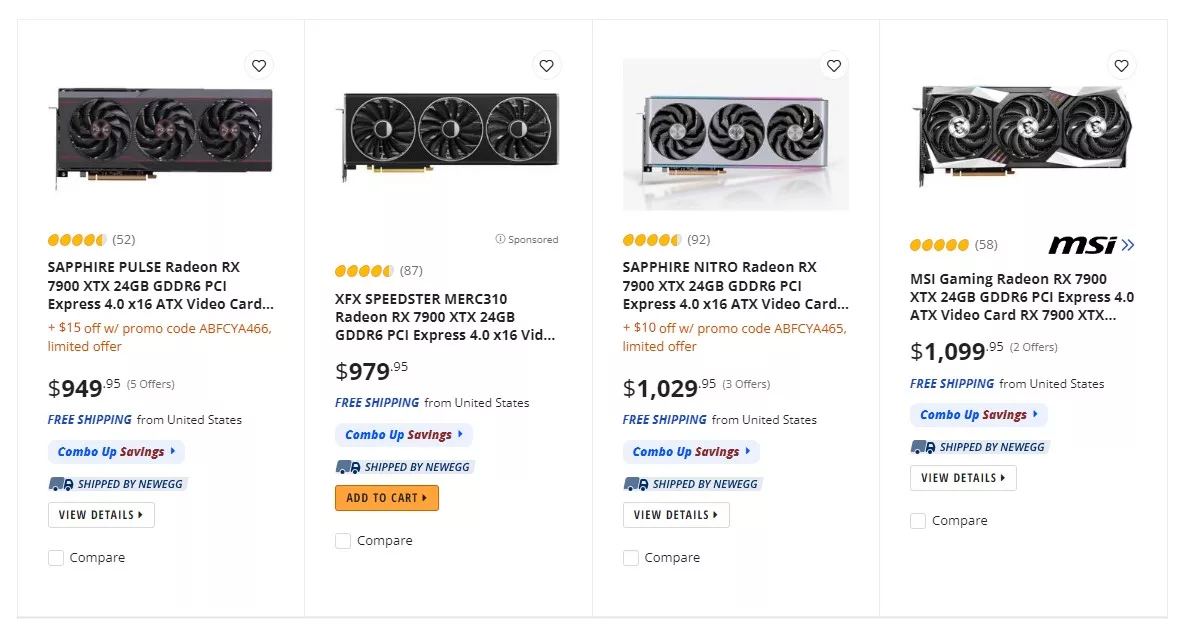

AMD has thrown its hat into the ring with the RX 7000 series, introducing two formidable contenders—The RX 7900 XTX and RX 7900 XT. The good news for budget-conscious gamers is that they won’t drain your bank account. The RX 7900 XTX sets you back about $999, while its sibling, the RX 7900 XT, asks for $899. That’s significantly cheaper compared to Nvidia’s big guns. We’re talking about a $600 difference for the top-tier model and $200 less for the runner-up. So, if you’re searching for an affordable gaming GPU, AMD’s got your back.
Now, on the other side of the ring, we have Nvidia. They’re not exactly known for being budget-friendly. The Nvidia GeForce RTX 4090 landed with a price tag of $1,599, and let’s not forget the upcoming RTX 4080, which will cost you $1,199. Nvidia initially teased us with a more budget-friendly RTX 4080 12GB model for $899, but they pulled the rug from under it. They ‘unlaunched’ it. And that’s Nvidia’s way of saying, “Hey, we can be expensive too!” So, if you’re looking for a wallet-friendly option, you might have to look elsewhere.
Nvidia’s pricing is on the premium side, no doubt about it.
The RTX 4090, released in October 2022, got folks emptying their wallets to the tune of $1,599 for the Founders Edition model. Partner versions from companies like MSI, Gigabyte, and Asus will hit your pocket even harder, approaching the $2,000 mark. Despite the hefty price, the RTX 4090 flew off the shelves, and scalpers are having a field day marking them up even further so, getting one at the recommended price? Well, good luck with that. Let’s hope the prices cool down over time.
Now, for the AMD side of the story. The RX 7900 XTX and RX 7900 XT were revealed in all their glory by AMD. The RX 7900 XTX first saw the light of day on November 3 and hit the shelves on December 13, setting you back a cool $1,000. Meanwhile, the RX 7900 XT, its trusty sidekick, joined the party with a $900 price tag. So, here’s the deal: AMD is definitely more budget-friendly than Nvidia. The price difference is significant, making AMD’s flag bearers much more accessible.
So, what’s the bottom line for your wallet? If you’re not too keen on breaking the bank for a GPU, AMD’s pricing might be your ticket to gaming paradise. Nvidia, well, they’re known for premium pricing, and this time is no different. Just remember, you get what you pay for, but make sure it’s worth the extra dough for the Nvidia brand.
Tech & Architecture
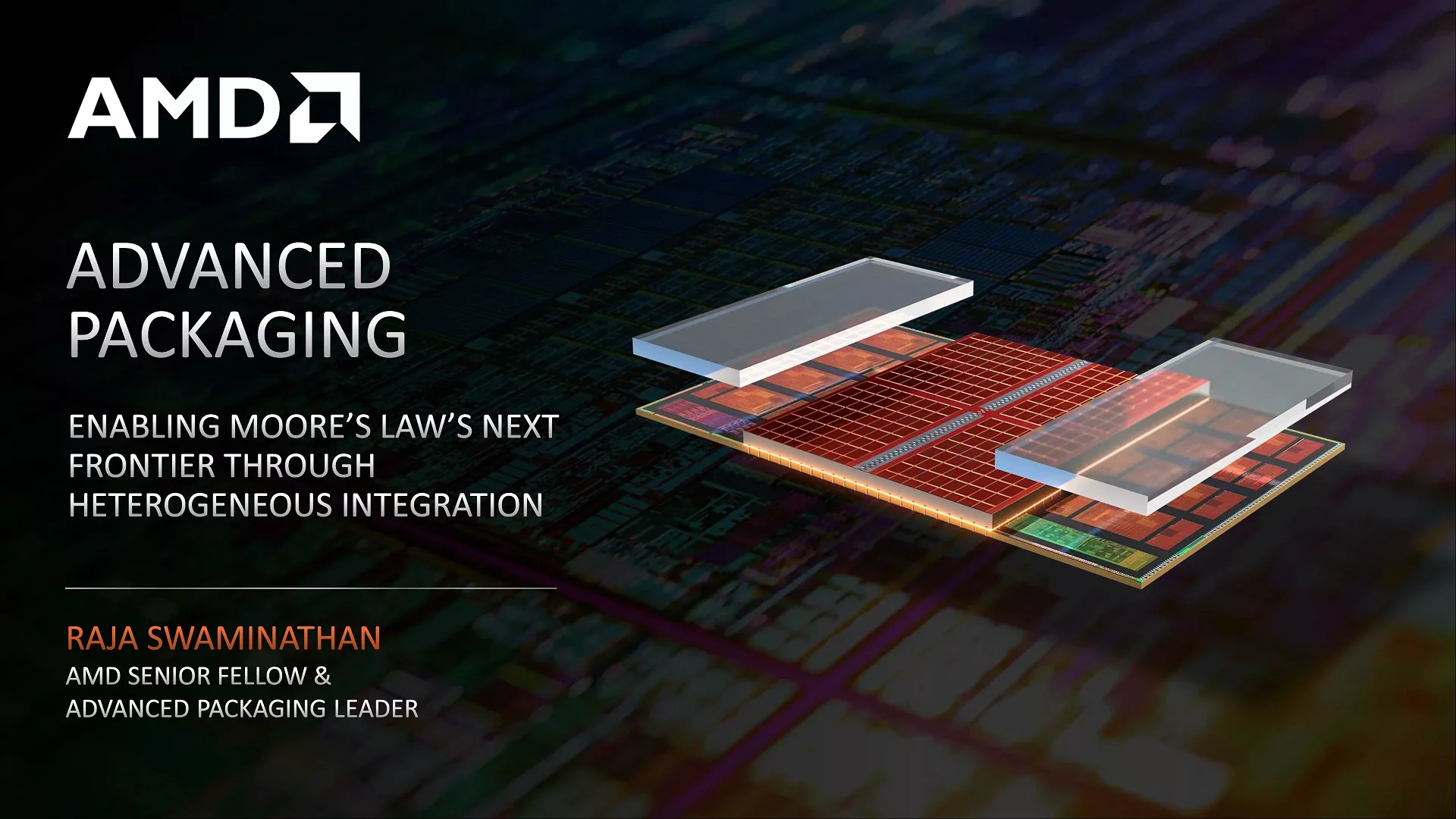
Nvidia kicked things off with the RTX 40 Series, showcasing their mighty RTX 4090. This beast boasts the brand-new Ada Lovelace architecture, and it’s all made possible thanks to TSMC’s N4 manufacturing process. On the other side of the ring, we have AMD, parading its Radeon RX 7000 series, with the RX 7900 XTX leading the charge. This new kid on the block belongs to AMD’s latest RDNA 3 lineup and was crafted using a 5nm process. Sounds impressive, right? Well, it is.
Now, what’s fascinating about the RX 7900 XTX is that AMD decided to shake things up.
They adopted a rather unique approach, similar to what they did with the Ryzen 7 5800X3D. They used a 5nm graphics compute die (GCD) along with a 6nm memory cache die (MCD) and stacked them on top of each other. This unique stacking allows the GPU to pack more punch, and it gets an added boost from the massive 96MB of Infinity Cache. While the RDNA 3 does give the 7900 XTX a significant edge over its predecessor, the 6900 XT, it’s still not a direct match for Nvidia’s colossal GPU. AMD positioned this flagship GPU to go toe-to-toe with Nvidia’s RTX 4080.
So, we’ve had the pleasure of testing both the RTX 4090 and the RX 7900 XTX, running them through the wringer with gaming tests and synthetic benchmarks. Let me cut to the chase—Both these GPUs are solid in their own right, but the RTX 4090 from Nvidia is an absolute powerhouse.
It’s currently the king of the hill and takes the crown for being the best GPU on the market. There’s no denying it’s a beast, capable of handling AAA games at max settings and 4K resolutions without breaking a sweat. It even flexed its muscles by running Genshin Impact at a mind-boggling 13K resolution. It might be overkill, but it’s a mighty feat nonetheless.
On the flip side, the AMD Radeon RX 7900 XTX is no slouch.
It’s a powerful graphics card tailored for 4K gaming, but when it comes to raw performance, it can’t quite match up to the RTX 4090. In our 4K gaming tests, the RTX 4090 pulled an impressive 113 frames per second (fps) on average. Compare that to the 76.4 fps the RX 7900 XTX managed to deliver, and you can see the RTX 4090’s beastly performance edge—A whopping 47% increase. However, if we put the RX 7900 XTX up against Nvidia’s RTX 4080, it’s a closer match. Nvidia still takes the crown, but the gap is much narrower.
For those gamers considering the RTX 4090, it offers not only brute power but also supreme ray tracing capabilities and the latest DLSS 3, which can work magic by generating entire frames rather than just pixels.
That’s a recipe for fantastic gaming performance, even though it comes at a premium price. Unfortunately for AMD, they’ve historically struggled to match Nvidia’s prowess in ray tracing. In our tests playing Cyberpunk 2077 at 4K with ray tracing, the RTX 4090 made it a pretty smooth experience at 42.9 fps, while the RX 7900 XTX lagged at 21.5 fps. AMD might be making strides, but Nvidia still reigns supreme in the ray tracing department.
What’s unique about AMD this time is their focus on performance-per-watt and performance-per-dollar. They’re aiming for a well-balanced GPU, and when you consider the MSRP, the RX 7900 XTX offers an excellent value for 4K gaming. If you look at the price per frame, it’s clear that the RX 7900 XTX provides great value.
In a nutshell, Nvidia’s RTX 4090 takes the crown for performance, but it’s an expensive powerhouse. AMD’s RX 7900 XTX, while not aiming to compete directly with the RTX 4090, still stands as a solid GPU that’s considerably more affordable. So, if you’re a gamer who prioritizes value for your hard-earned money and doesn’t put ray tracing above all else, the AMD card might just be your perfect match.
Gaming Performance
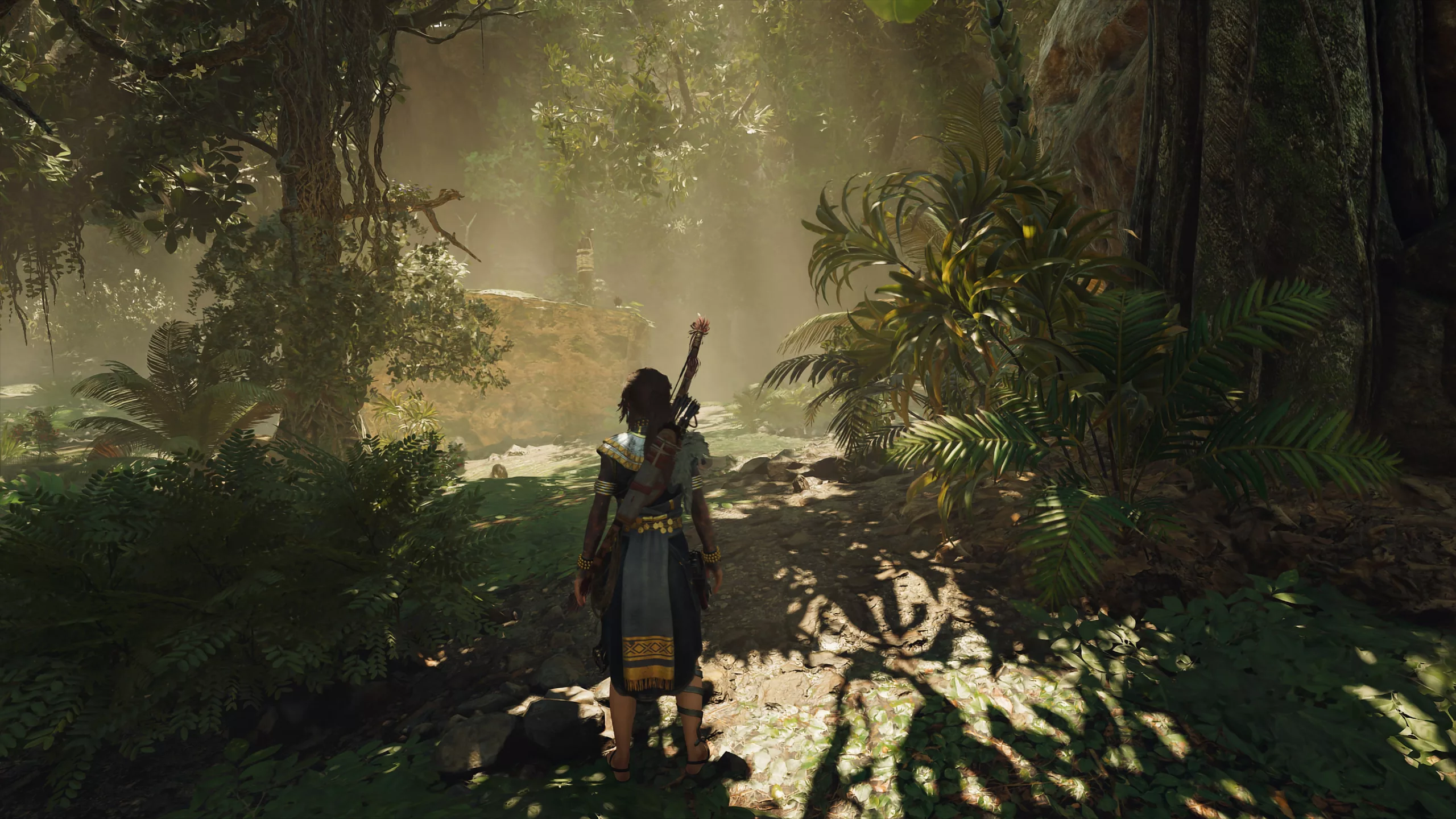
When it comes to these high-end GPUs from AMD and Nvidia, the performance stakes are sky-high. We’ve put them through their paces in both gaming tests and synthetic benchmarks, and the results are nothing short of exciting.
Nvidia came out swinging with its RTX 40 Series, and the flagship RTX 4090 is an absolute powerhouse. It’s got the new Ada Lovelace architecture and is manufactured using TSMC’s N4 process. But what’s all that tech jargon translate to in real-world gaming?
The RTX 4090 is the undisputed champion, delivering a whopping 90% increase in frames per second compared to its predecessor, the RTX 3090. It’s a performance beast that can handle high-end games with ease.
But here’s the thing—Most professional workflows and gaming scenarios don’t require super high frame rates. Instead, they demand the ability to render more geometry and effects on the screen while maintaining a smooth gaming experience. That’s where the RTX 4090 shines, and if you’re all about gaming and pushing your system to the limits, this is the card you’ve been waiting for.
Now, the RTX 4080 doesn’t fall far behind.
It’s roughly 40% more powerful than the RTX 3080 Ti and packs a decent 16GB of VRAM. This extra VRAM opens the door to bigger resolutions and more detailed in-game environments. So, if you’re into high-res gaming and want to crank up those graphical settings, the RTX 4080 will be your best buddy. It’s a commendable step up from the previous generation and shows Nvidia’s commitment to improving the gaming experience.
On the AMD side of the ring, we’ve got the Radeon RX 7000 series, with the RX 7900 XTX as the heavyweight contender. This card impressively keeps up with the more expensive RTX 4080 in rasterized workloads. That’s a big win for AMD and an exciting development in the ongoing GPU rivalry.
However, when it comes to ray tracing, the technology du jour for virtual production, and cutting-edge visuals, the RX 7900 XTX lags behind. Nvidia has taken a substantial lead in this department, offering superior ray tracing performance. But don’t count AMD out just yet; they’re steadily improving and might just close the gap in the future.
Neither series is “bad” per se for gaming. They both can run modern games really well. For example, you can grab the entry-level card from either series to run less taxing games, mid-range options to run games at higher settings or for 1440p gaming, and finally, you can choose the highest-end cards from either product line to run the latest and the greatest with hardware-accelerated ray tracing.
Rendering Performance
Let’s talk GPU rendering—Something near and dear to content creators’ hearts.
The RTX 4090 is the undeniable champion in this category, nearly doubling the score of the RTX 3090. It even outpaces the pricier RTX 3090 Ti, a GPU that’s less than a year old. For those who need the best GPU for rendering, the RTX 4090 is the clear choice. But it’s not just about raw power; it’s also a testament to Nvidia’s commitment to content creators.
The RTX 4080, coming in at the same price as the RTX 3080 Ti, delivers 50% faster renders. With the bumped-up VRAM to 16GB, it lets you tackle larger and more complex rendering tasks, a game-changer for professionals who demand the utmost in rendering performance.
Last but not least, the RTX 4070 Ti, a 12GB model, stands as a compelling choice. It comes in at a slightly higher price than the RTX 3080, and for that extra cost, it returns a 28% boost in rendering performance. It also brings an additional 2GB of VRAM to the table.
While it may not steal the spotlight like its more powerful siblings, it’s still a noteworthy upgrade over the RTX 3080.
Pros & Cons
Now, it’s time to summarize everything in pros and cons. Both series have their advantages and disadvantages for a lot of gamers.
AMD RX 7000 Series Pros & Cons
Pros
- Affordable Pricing: AMD’s RX 7000 series offers GPUs at a lower price point compared to Nvidia’s offerings, making it a budget-friendly choice for gamers and content creators.
- Excellent Price-Performance Ratio: AMD’s GPUs provide competitive performance relative to their price, making them a cost-effective choice for users looking to balance performance and budget.
- Innovative Technology: The use of a 5nm process and a stacked GPU configuration demonstrates AMD’s commitment to pushing the technological boundaries in GPU design.
- Lower Power Consumption: Across the board, all AMD 7000 series cards are rated for lower TDPs, which might be an important consideration for many gamers, especially those who don’t wish to upgrade their PSU.
Cons
- Ray Tracing Performance: AMD has historically lagged behind Nvidia in ray tracing capabilities. While they’ve made improvements, Nvidia still maintains the upper hand in this aspect.
- Competition with Nvidia: AMD faces stiff competition from Nvidia, which has a larger market share and more extensive software support. This may limit AMD’s ability to gain a foothold in certain segments of the GPU market.
- Availability: As with all GPUs in the current market, availability can be an issue, and some models may be challenging to find at their suggested retail prices.
- 4K Performance: Though AMD’s latest cards deliver decent 4K performance, they are mainly a 1440p card for enthusiast gamers or gamers who don’t overclock. In any 4K comparison, Nvidia will outperform the AMD-equivalent card in AAA titles, more or less.
- Loud & Hot: The higher-end AMD cards might consume less power and cost less, but they tend to run hotter and are not quiet at all.
Nvidia RTX 40 Series Pros & Cons
Pros
- Highest-End Gaming Performance: Nvidia’s RTX 40 Series GPUs deliver outstanding gaming performance, especially at high resolutions, ensuring a premium gaming experience.
- Ray Tracing Dominance: Nvidia continues to lead the industry in ray tracing capabilities, with impressive visual fidelity and performance in supported games. 4K with RT on ultra in Cyberpunk 2077 gives 40+ FPS, which is insane.
- DLSS 3: DLSS makes Nvidia cards significantly better than they already are, giving you a huge boost in FPS in the majority of games. The image quality isn’t consistently good across all titles, but it’s better than AMD’s FSR in many cases.
- GPU Rendering: These GPUs excel in GPU rendering tasks, making them the top choice for professionals in content creation, 3D rendering, and more.
- Robust Software Ecosystem: Nvidia has a well-established software ecosystem with features like DLSS and ray tracing support, enhancing gaming and creative experiences.
Cons
- High Price Tag: Nvidia’s GPUs in the RTX 40 Series come at a premium price. For example, the RX 7900 XTX gives near-perfect 4K rasterizing and a playable RT experience at $900-1000, whereas the RTX 4080 itself costs $1100-1400, not to mention the RTX 4090 being closer to $2000.
- Power Consumption: High-performance Nvidia GPUs tend to consume more power, which can lead to higher energy costs and the need for robust cooling solutions. Users of RTX 4090 should worry about transient spikes and get at least a 1000W PSU to accompany it (check our recommendations).
- Overkill for Casual Gamers: For casual gamers, the immense power and cost of these GPUs may be excessive, and a more affordable option could be a better fit.
Wrapping Up
AMD struck first with a significant cost advantage, offering GPUs that can go toe-to-toe with Nvidia’s titans while leaving some cash in your pocket. For budget-conscious gamers and enthusiasts, AMD’s RX 7000 lineup is a compelling option, with prices that won’t break the bank.
The AMD Radeon RX 7000 series has certainly brought innovative technology with an efficient 5nm process and a stacked GPU configuration. Nvidia’s RTX 40 Series countered with its Ada Lovelace architecture, signaling a step into the future of gaming.
But the heart of the matter is, of course, gaming performance.
Nvidia’s RTX 40 Series is simply the best in the world right now, particularly with the RTX 4090 leading the charge. It’s a frame-rate monster that ensures you can immerse yourself in AAA gaming experiences without a hitch and get the best, most realistic ray tracing experience possible today.
For content creators, the GPU rendering capabilities are second to none, raising the bar for the industry.
AMD’s RX 7000 series, on the other hand, holds its ground admirably. It may not outshine Nvidia in every aspect, but it packs a punch, especially when you consider the price-performance ratio.
So, what should you go for?
It’s all about what you’re looking for in your gaming or creative experience. Nvidia’s RTX 40 Series takes the lead in raw power and performance, perfect for gamers looking to push the envelope. AMD’s RX 7000, with its impressive price-performance balance, caters to the budget-conscious gamer who still demands top-notch gaming and rendering capabilities.


